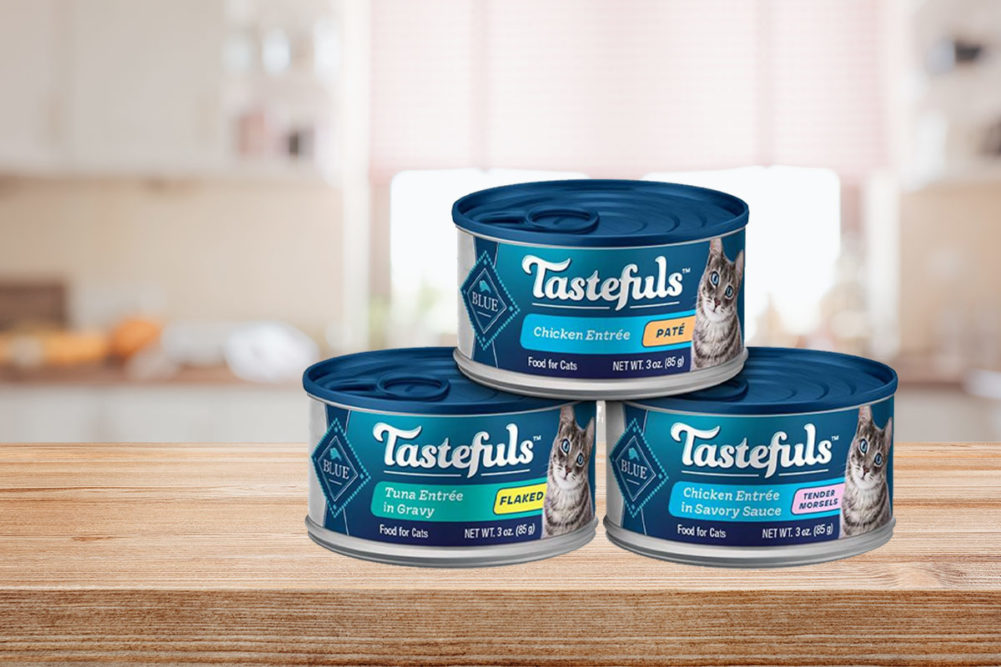MINNEAPOLIS — General Mills’ pet segment sales grew 18% to $460 million during the second quarter ended Nov. 29, representing the largest year-over-year growth rate by operating segment and its third-largest segment in terms of sales over the quarter.
These gains were attributed to “broad-based growth across all product segments,” said Kofi Bruce, chief financial officer, “including double-digit growth for both dog food and cat food, more than 25% growth for wet food, and roughly 40% growth for treats.”
Additionally, segment operating profit in pet grew 48% to $119.3 million over the quarter, leading all other operating segment growth numbers by a wide margin. Segment operating profit gains were driven by strong volume growth, positive price/mix and HMM [holistic margin management] cost savings, and partially offset by increased media investments, Bruce explained.
“We lapped our significant Food, Drug and Mass [FDM] channel expansion nine months ago, and the BLUE brand continues to win with pet parents as we drive awareness and educate them about the benefits of wholesome natural pet food,” said Jeff Harmening, chairman and chief executive officer.
Overall, the company is pleased with the performance, so far this fiscal year, of the Blue Buffalo brand, which it acquired in April 2018. Since its acquisition, General Mills has taken the brand swiftly into the FDM retail channel to meet consumers everywhere they shop for pet food and treats. This has resulted in increased market share, household penetration and brand awareness, according to Bruce.
“We’ll build on this momentum in calendar 2021, by launching innovation into segments of the category where the BLUE brand is less developed, including wet cat food and pet treats,” Harmening continued. “For example, wet cat food is roughly a $5 billion product segment in the US, with wholesome natural products only representing about 15% of segment sales, with significant opportunity for expansion.”
The company shared plans to launch a new wet cat food brand, Tastefuls, in January 2021. The line is designed to cater to “more demanding palates,” Harmening shared, while adhering to Blue Buffalo’s promise of using only natural ingredients.
“We’ll support this launch with dedicated investment, leveraging our BLUE integrated marketing model,” Harmening explained. “We’re excited about this next step as we continue to expand the BLUE brand across the pet food category, and we’ll have more innovation to share as we move through calendar 2021.”
The company is doubling down on data and analytics to help leverage its scale, marketing and e-commerce strategies. The company is currently developing these capabilities through some of its baked goods and healthy food brands.
“Data-driven digital marketing is beginning to fuel every aspect of the General Mills brand experience, from strategy through conversion, in a holistic, connected approach,” Harmening said. “We’re getting smarter every day about how we collect and connect data to gain better insights about consumers and where to play, as well as how to continuously optimize how we activate our messages.”
Total net sales for General Mills totaled $4.72 billion, up 7% from year-ago $4.42 billion. Overall operating profit grew 13% to $916.6 million over the quarter, and diluted earnings per share (EPS) grew 17% to $1.11.
“We executed very well again in the second quarter, driving strong performance on the top and bottom lines,” Harmening said. “In this dynamic environment, I’m proud of the way we’re taking care of our people and serving our consumers with brands they love and trust. We strongly believe that the work we’re doing today to strengthen our brands and capabilities and deepen our connection with consumers will translate to profitable growth and shareholder value creation for the long term.”
General Mills’ shared guidance for the second half of its fiscal 2021 year, projecting third-quarter organic sales growth to be “roughly similar” to its organic sales growth in the second quarter. The company expects its fourth-quarter sales to be “above pre-pandemic levels” but lower than its fourth quarter fiscal 2020 results. At-home food demand is expected to continue at an elevated rate.
“One of the things I'm most pleased with [in the pet food business] is that we're growing across our different segments,” Harmening said during the company’s second-quarter earnings call. “If you look at it by product type… whether it's wet dog food or dry dog food or dog treats, we're growing in all those segments. If you look at cat food, whether it's dry or wet or treats, we're growing in all those segments. Then if we look across channels, we're actually growing across all the channels we participate in. We're growing in the food, drug and mass channel… We actually returned to slight growth in specialty. And we're actually growing quite a bit in e-commerce. I think that speaks to the underlying health of our pet food business when we can grow in all the different segments, whether there's consumer segments or whether it's in the channels we compete in.”
Read more about corporate strategy, financial performance, mergers and acquisitions on our Business page.




